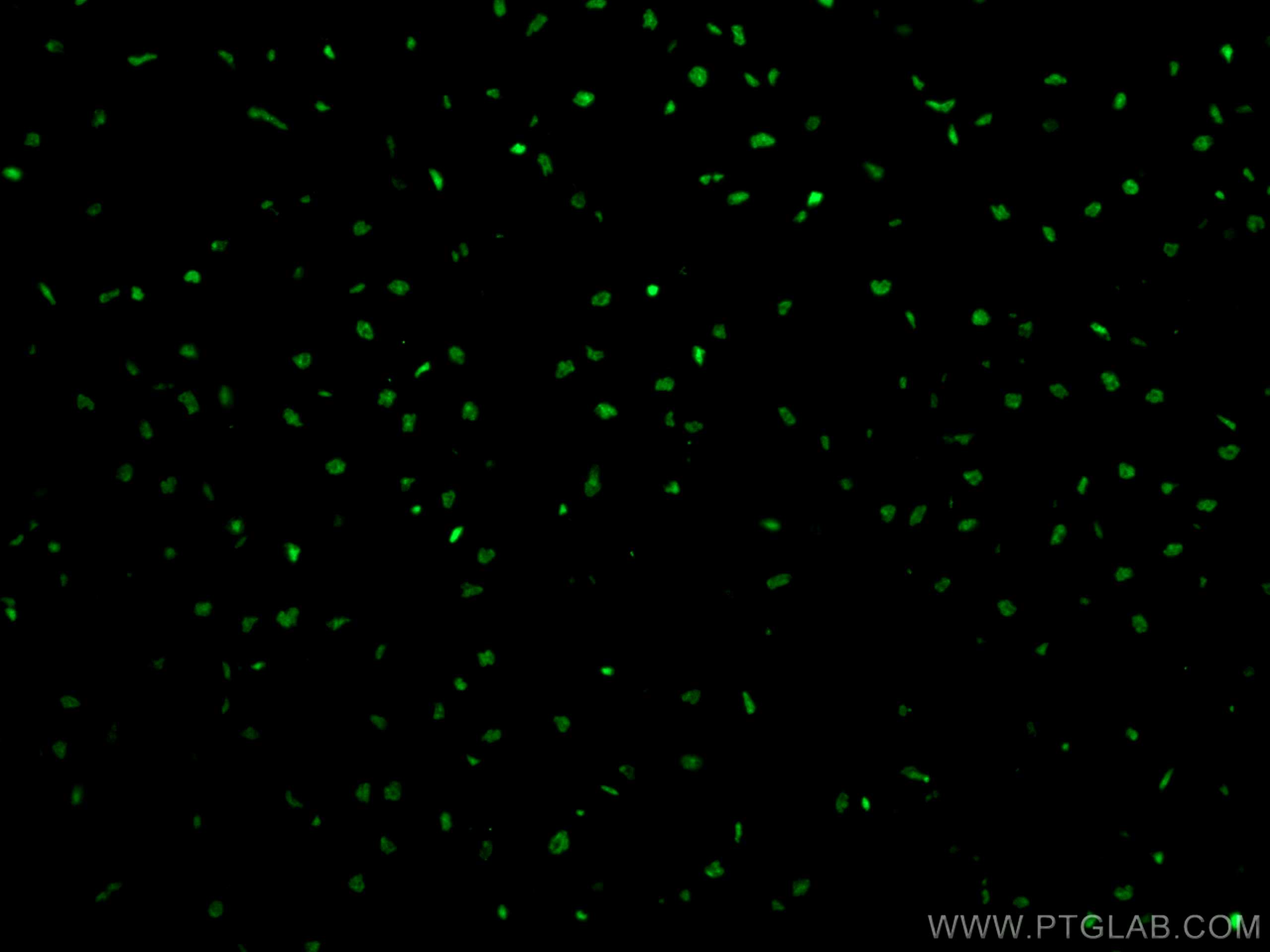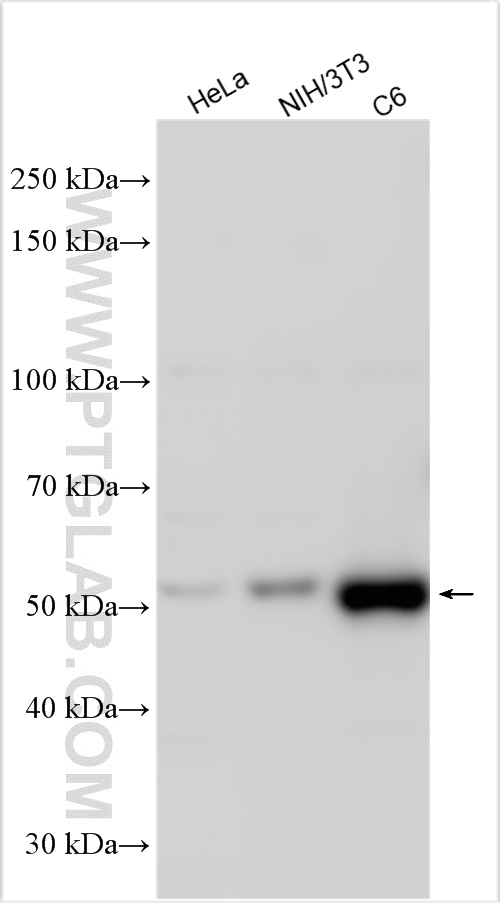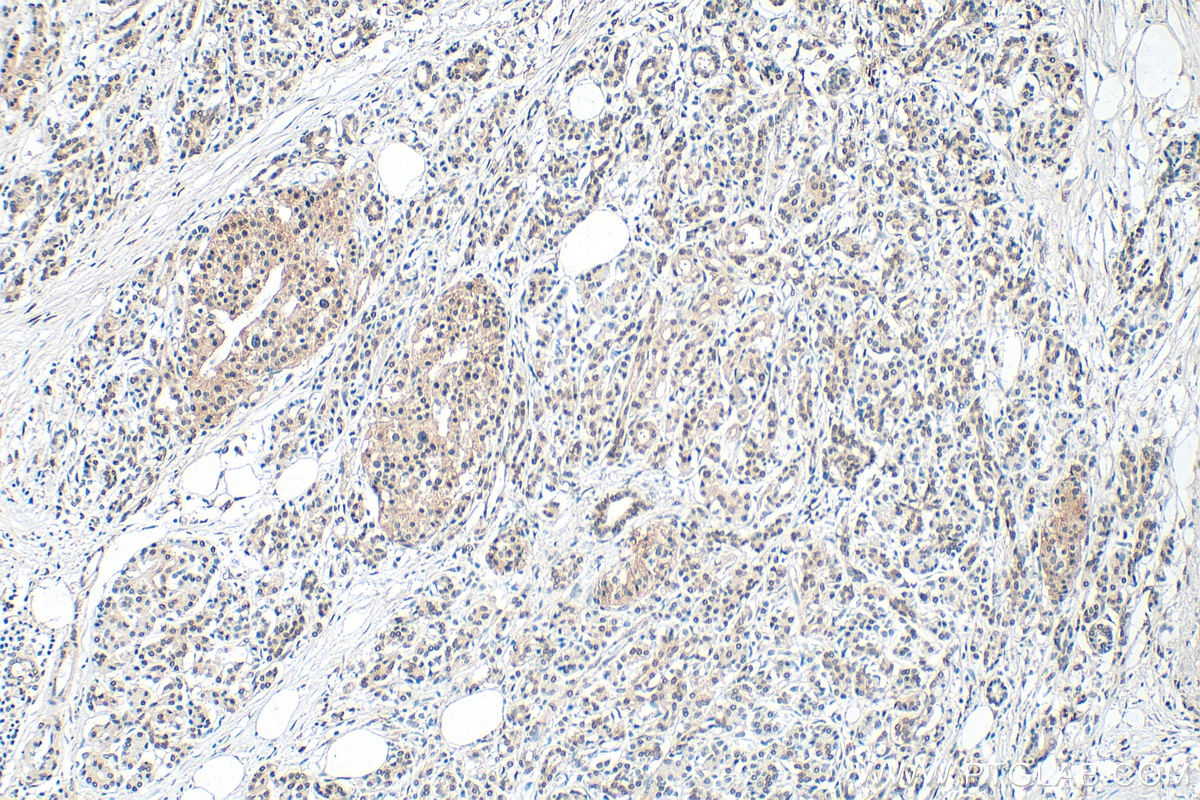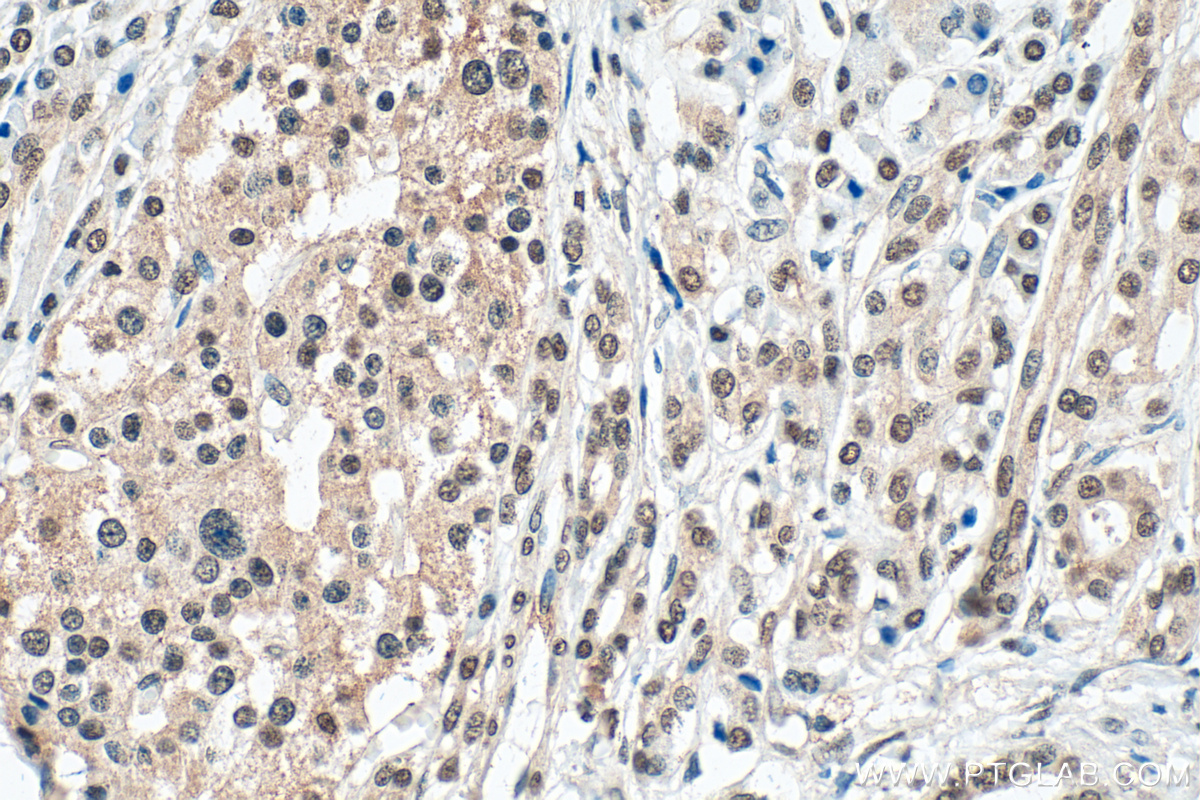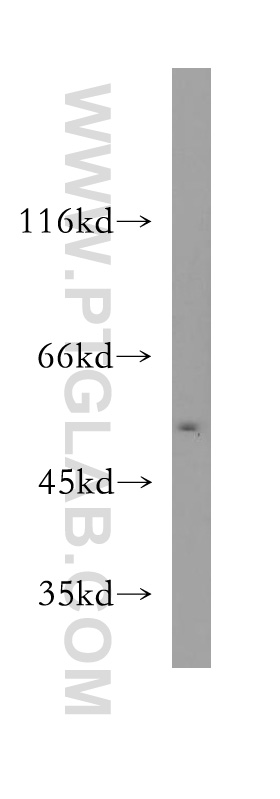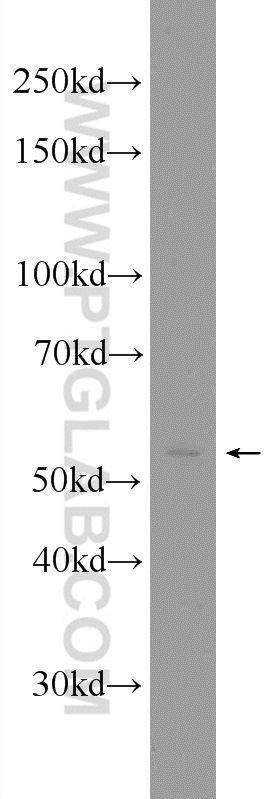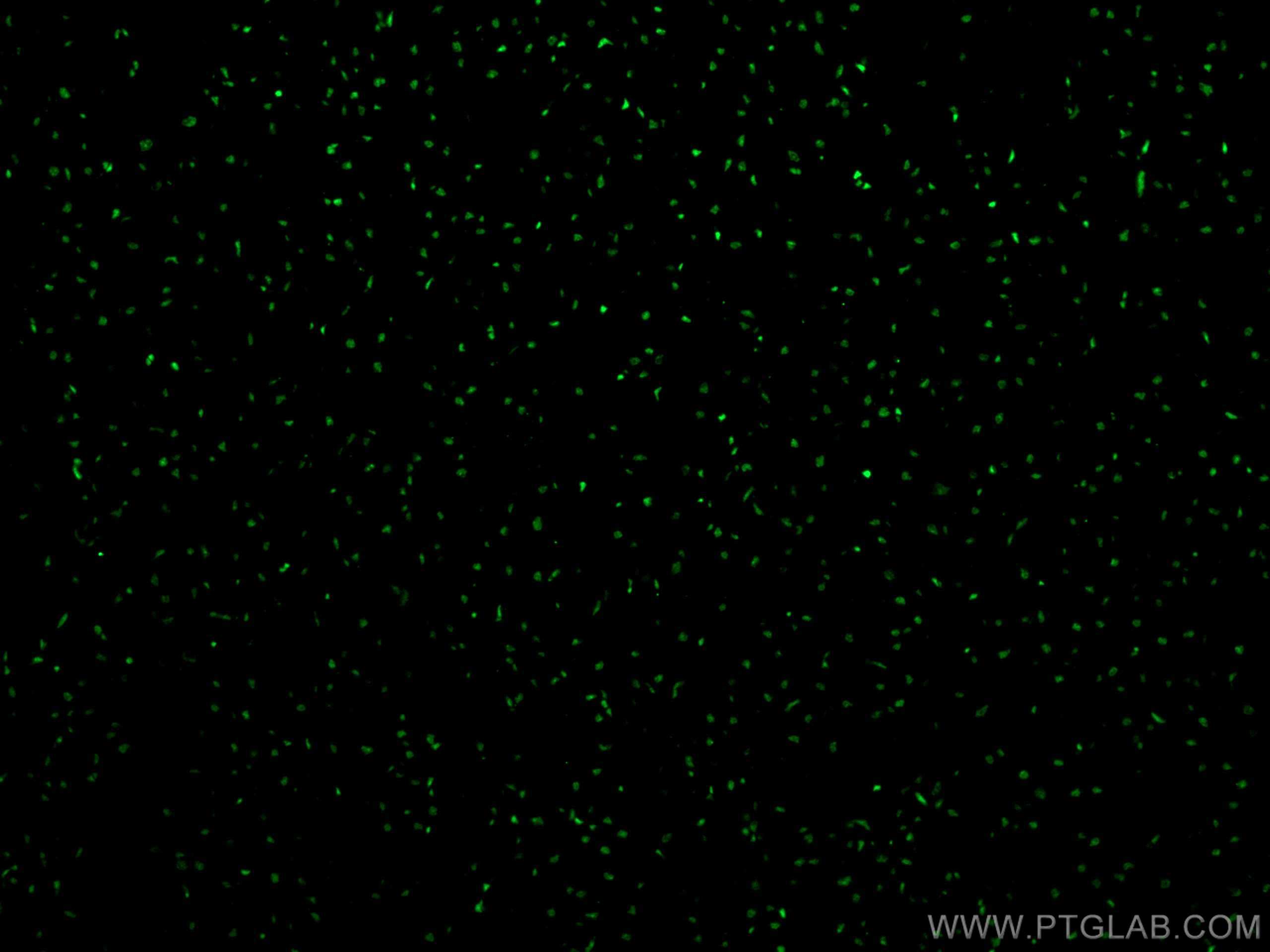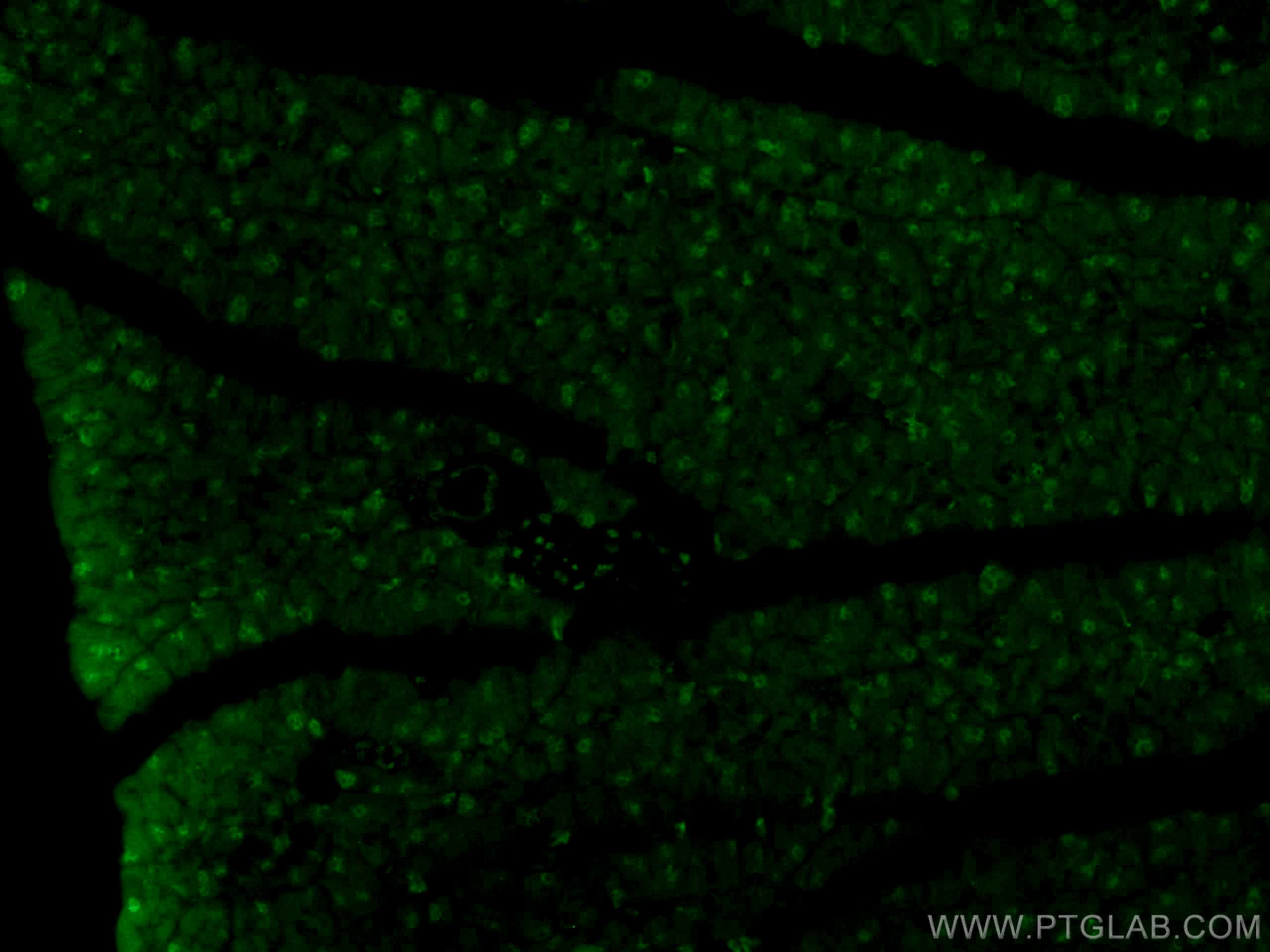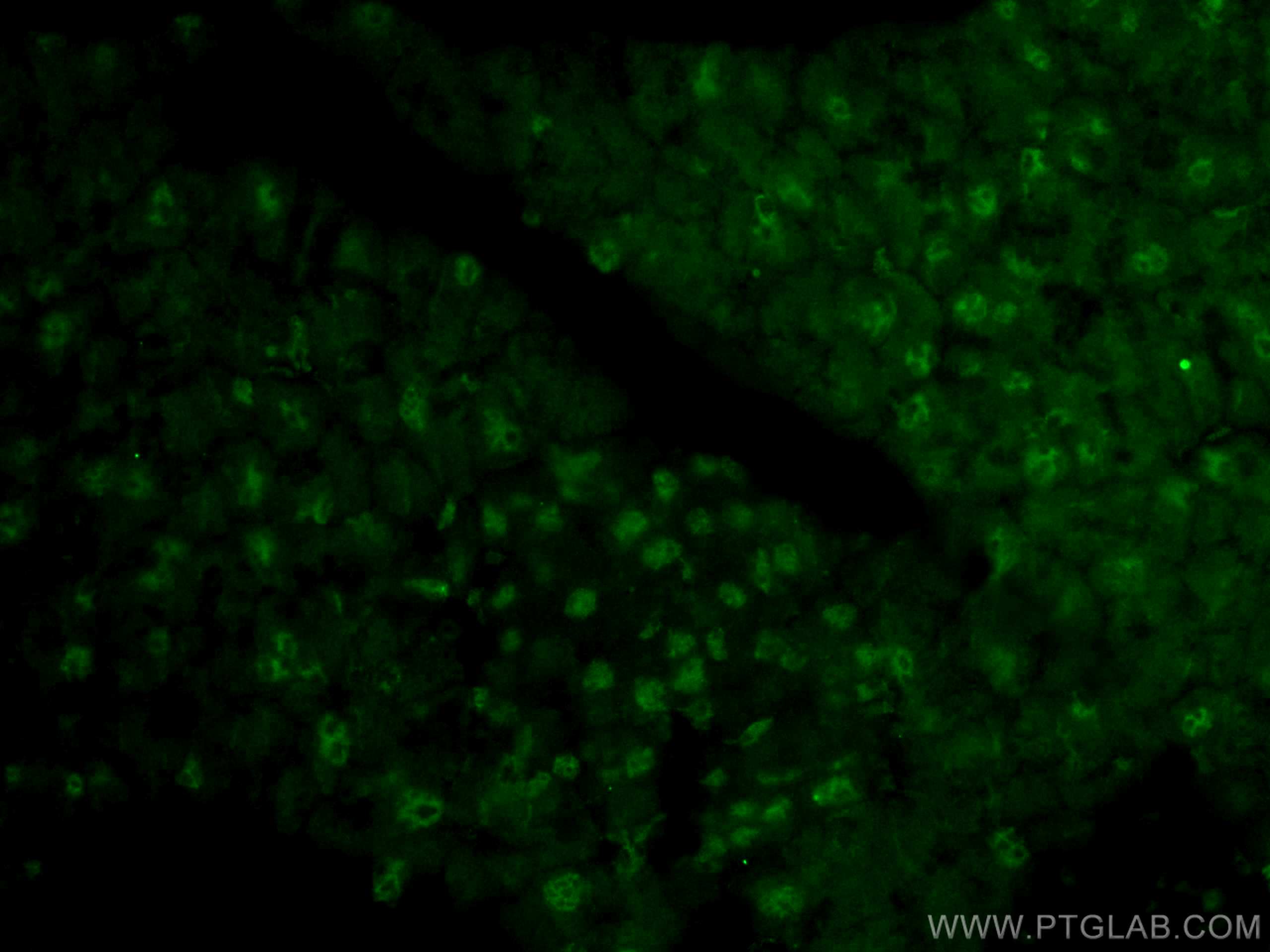SMARCD3 Polyclonal antibody
SMARCD3 Polyclonal Antibody for WB, IHC, IF-P, ELISA
Host / Isotype
Rabbit / IgG
Reactivity
human, mouse, rat
Applications
WB, IHC, IF-P, ELISA
Conjugate
Unconjugated
验证数据展示
经过测试的应用
| Positive WB detected in | HeLa cells, BxPC-3 cells, NIH/3T3 cells, C6 cells |
| Positive IHC detected in | human pancreas cancer tissue Note: suggested antigen retrieval with TE buffer pH 9.0; (*) Alternatively, antigen retrieval may be performed with citrate buffer pH 6.0 |
| Positive IF-P detected in | human heart tissue, mouse pancreas tissue |
推荐稀释比
| Application | Dilution |
|---|---|
| Western Blot (WB) | WB : 1:500-1:3000 |
| Immunohistochemistry (IHC) | IHC : 1:200-1:800 |
| Immunofluorescence (IF)-P | IF-P : 1:50-1:500 |
| It is recommended that this reagent should be titrated in each testing system to obtain optimal results. | |
| Sample-dependent, Check data in validation data gallery. | |
发表文章中的应用
| WB | See 6 publications below |
| IHC | See 1 publications below |
产品信息
12838-1-AP targets SMARCD3 in WB, IHC, IF-P, ELISA applications and shows reactivity with human, mouse, rat samples.
| Tested Applications | WB, IHC, IF-P, ELISA Application Description |
| Cited Applications | WB, IHC |
| Tested Reactivity | human, mouse, rat |
| Cited Reactivity | human, mouse |
| Immunogen | SMARCD3 fusion protein Ag3896 种属同源性预测 |
| Host / Isotype | Rabbit / IgG |
| Class | Polyclonal |
| Type | Antibody |
| Full Name | SWI/SNF related, matrix associated, actin dependent regulator of chromatin, subfamily d, member 3 |
| Synonyms | Rsc6p, CRACD3, BRG1-associated factor 60C, BRG1 associated factor 60C, BAF60C |
| Calculated Molecular Weight | 54 kDa |
| Observed Molecular Weight | 54-55 kDa |
| GenBank Accession Number | BC002628 |
| Gene Symbol | SMARCD3 |
| Gene ID (NCBI) | 6604 |
| RRID | AB_2192157 |
| Conjugate | Unconjugated |
| Form | Liquid |
| Purification Method | Antigen affinity purification |
| UNIPROT ID | Q6STE5 |
| Storage Buffer | PBS with 0.02% sodium azide and 50% glycerol pH 7.3. |
| Storage Conditions | Store at -20°C. Stable for one year after shipment. Aliquoting is unnecessary for -20oC storage. |
背景介绍
实验方案
| Product Specific Protocols | |
|---|---|
| WB protocol for SMARCD3 antibody 12838-1-AP | Download protocol |
| IHC protocol for SMARCD3 antibody 12838-1-AP | Download protocol |
| IF protocol for SMARCD3 antibody 12838-1-AP | Download protocol |
| Standard Protocols | |
|---|---|
| Click here to view our Standard Protocols |
发表文章
| Species | Application | Title |
|---|---|---|
Cell Discov m6Am methyltransferase PCIF1 is essential for aggressiveness of gastric cancer cells by inhibiting TM9SF1 mRNA translation. | ||
Cardiovasc Res The G protein coupled receptor Apj is expressed in the second heart field and regulates Cerberus-Baf60C axis in embryonic stem cell cardiomyogenesis. | ||
Transl Oncol SNF5, a core subunit of SWI/SNF complex, regulates melanoma cancer cell growth, metastasis, and immune escape in response to matrix stiffness. | ||
Cells The SMARCD Family of SWI/SNF Accessory Proteins Is Involved in the Transcriptional Regulation of Androgen Receptor-Driven Genes and Plays a Role in Various Essential Processes of Prostate Cancer | ||
Nat Cardiovasc Res Translational landscape of direct cardiac reprogramming reveals a role of Ybx1 in repressing cardiac fate acquisition | ||
Prostate Low SMARCD3 expression is associated with poor prognosis in patients with prostate cancer |
